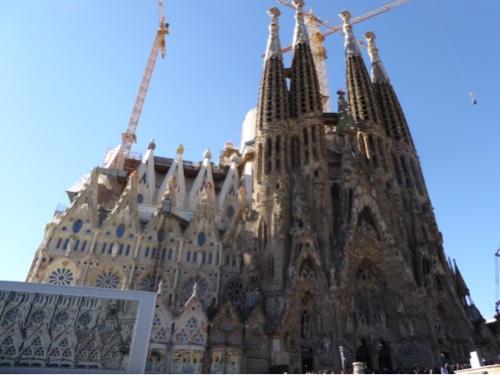Antoni Gaudi was an artist and an archectect beginning in the late 1800's. His work took nature and art and combined them into works that were practical as well as art, unifying creation with human endeavors. La Sagrada Familia and Parc Guell are just two examples of his works.



La Sagrada Familia was begun in 1882 and is still a work in progress with plans to be completed in 2026. It will eventually have a 172.5 meter tall tower to be the Jesus Tower with lower towers to represent the 4 apostles and 12 to represent the 12 disciples. The outer walls depicted Jesus birth, his life, the passion (crucifiction and resurrection) and the Glory of mankind. Inside and throughout the cathedral the use of nature is evident from the "forest " of columns to the ceiling and many of the doors, walls, and facades where one can see animals, bus, flowers and trees.



The stained glass windows are colors to represent the sunrise and sunset hues of cool and warm, other windows bring light into the nave as if in a forest. We walked from one end to the other, then into the cloister/ museum, and viewed the crypt running under the nave.



Parc Guell is also a creation of Gaudi. Work was halted on the park in 1914 and it was designated as a World Heritage Site in 1984. It is another example of practicality and nature working together. The plaza is encircled with undulating seating created with mosaic tiles while held up by columns with decorations in mosaic tiles. One can look out over the city and out into the Mediterranean Sea. On either side of the plaza is a cave like retaining wall that runs for several meters on either side of the plaza. Two small humble homes sit at the bottom of the stairway. Mosaic tiles are used throughout the park.

No comments:
Post a Comment